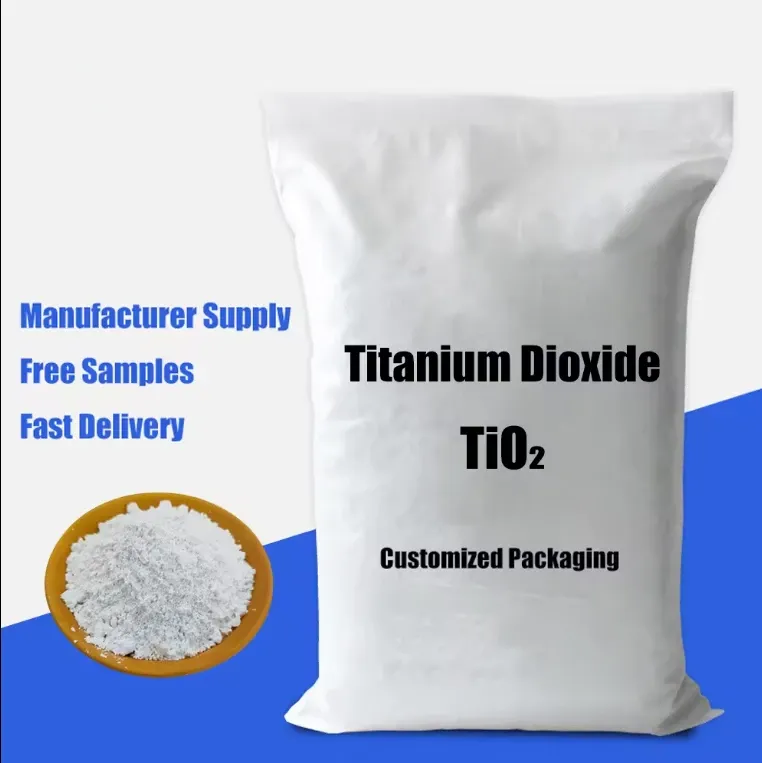
ก.พ. . 24, 2025 09:25 กลับไปที่รายการ
Self Cleaning Application of Titanium Dioxide Ceramic Coating in the Field of Construction
The self-cleaning application of titanium dioxide ceramic coating in the construction field has received widespread attention in recent years. ไทเทเนียมไดออกไซด์ has excellent photocatalytic performance and can decompose organic dirt under ultraviolet irradiation, achieving self-cleaning effect. The coating surface can form a dual effect of hydrophobicity and hydrophilicity. When washed away by rainwater, dirt and pollutants are easily carried away, reducing the cleaning work on exterior walls and roofs.

Titanium Dioxide Ceramic Coating Can Be Used for Building Exterior Walls
Traditional building exterior walls are exposed to the natural environment for a long time, which easily adsorbs dust in the air, particulate matter in car exhaust, and various organic pollutants. This not only seriously affects the aesthetics of the building, but also requires regular manual cleaning and maintenance, which consumes a lot of manpower, material resources, and financial resources. Applying titanium dioxide ceramic coating to building exterior walls can effectively solve this problem.
For example, in some high-rise buildings in Tokyo, Japan, exterior wall materials containing titanium dioxide ceramic coatings are used. After years of exposure to wind, sun, and rain erosion, the tio2 ceramic coating has continuously and stably exerted its photocatalytic and superhydrophilic effects, keeping the exterior walls of the building relatively clean. Compared with adjacent buildings that do not use this coating, the cleaning frequency has been reduced from 3-4 times per year to once every 2-3 years, greatly saving maintenance costs.
Titanium Dioxide Ceramic Coating Can Be Used for Glass Curtain Walls
Glass curtain walls are widely used in various modern buildings due to their transparent and modern appearance. However, glass curtain walls are prone to stains such as dust, bird droppings, and rain marks, which not only affect the lighting effect but also reduce the overall visual aesthetics of the building. The glass curtain wall coated with ti02 coating can automatically decompose organic pollutants on the surface through photocatalysis under sunlight, and its superhydrophilicity allows rainwater to quickly wash away dust, stains, etc., maintaining the cleanliness and transparency of the glass curtain wall at all times.
Research Status of Titanium Dioxide Ceramic Coatings
At present, the application research of titanium dioxide ceramic coatings in the field of self-cleaning has achieved fruitful results, and many products have been successfully introduced to the market and widely used. However, the technology still faces some urgent challenges that need to be addressed.
The photocatalytic activity of titania tio2 mainly relies on ultraviolet excitation, and in practical application environments, especially indoor environments, the ultraviolet content is low and visible light dominates. ไทเทเนียมไดออกไซด์ has a weak ability to absorb visible light, which greatly limits its application effectiveness in low light environments such as indoors.
In order to solve this problem, researchers have expanded the light response range of titanium dioxide to the visible light region through methods such as element doping (such as nitrogen doping, carbon doping, etc.) and composite with other semiconductors (such as TiO ₂ - ZnO composite). However, there are still some technical difficulties in these methods, such as difficulty in accurately controlling doping concentration and the need to improve the stability of composite semiconductors.
-
Application of Titanium Dioxide 2195 in Water Purification
ข่าวNov.14,2025
-
What are the global market trends of Titanox titanium dioxide in recent years
ข่าวNov.14,2025
-
Effect of particle size distribution on the optical properties of R996 TiO2
ข่าวNov.14,2025
-
Latest Technological Innovations in Rutile Titanium Dioxide Manufacturing
ข่าวNov.14,2025
-
Compatibility of Titanium Dioxide Concrete Pigment with Different Concrete Admixtures
ข่าวNov.14,2025
-
Environmental Impact of Titanium Dioxide Pigment Manufacturing and Mitigation Measures
ข่าวNov.14,2025
